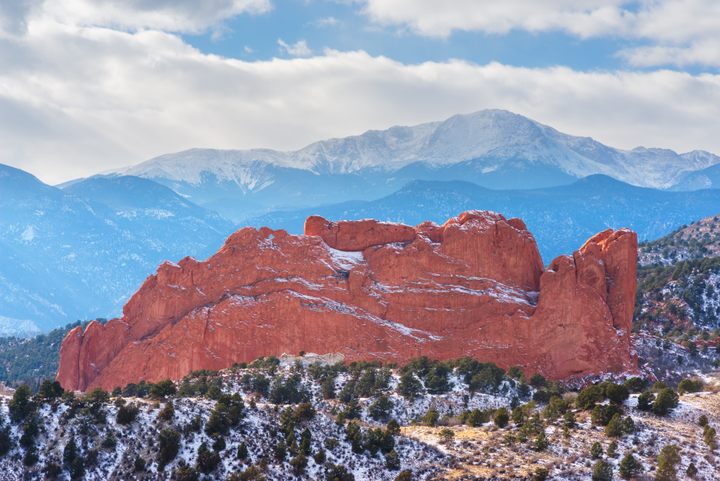
Colorado Winter Wonderland
Pack your snowshoes and see the Centennial State like never before. We hand-picked a collection of unique Colorado destinations transformed by glistening frost and white snow.
It’s no secret that Colorado is among the most beautiful places in North America. It’s home to more than 600 mountains higher than 13,000 feet in elevation, over 20 ski resorts, over 400 breweries, and is one of the most geologically diverse areas in the western United States.
In the winter months, Colorado is transformed into a snowy Eden that offers incredible opportunities for adventure and exploration. Imagine yourself transported underneath a sunny blue sky with views of glistening snow-capped mountains, wondrous desert formations, and mysterious geologic playgrounds.
The locations below have been hand-picked for their uniqueness and ability to pique curiosity while inspiring a sense of adventure.
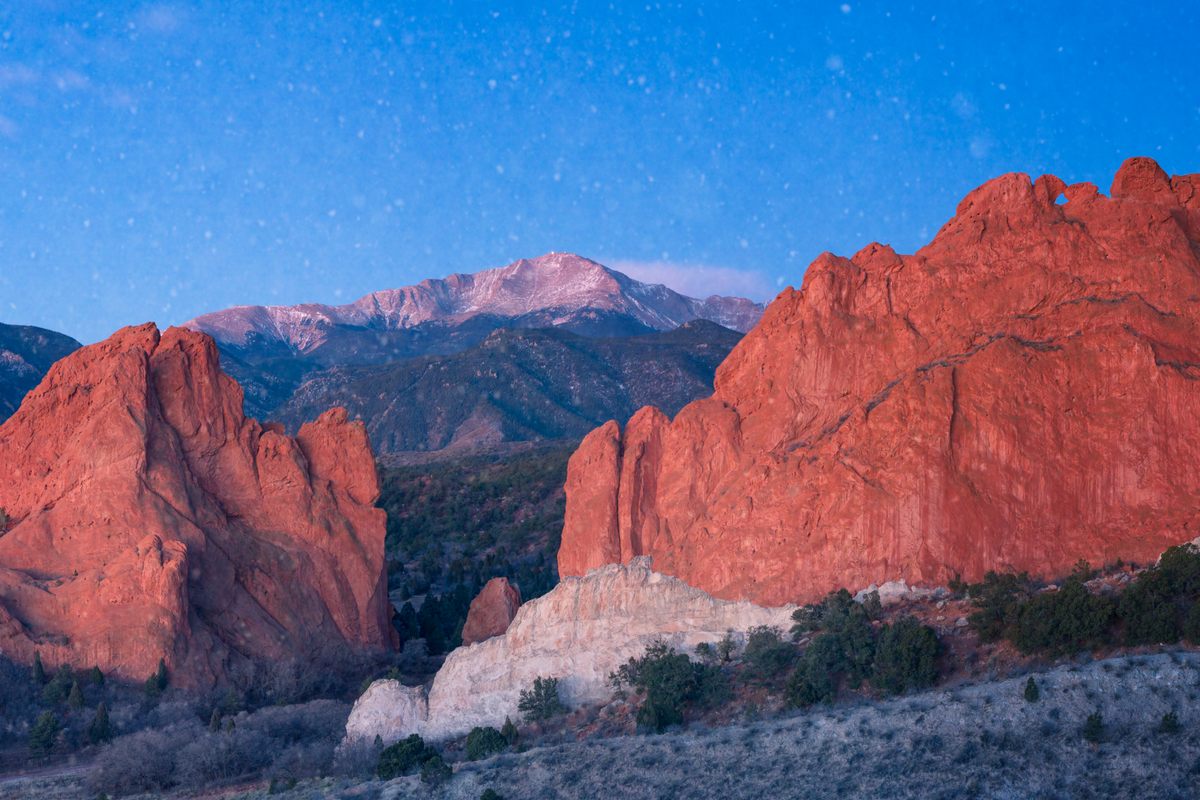
Garden of the Gods: Mysterious rock formations at the foot of America’s Mountain
Millions of years ago, in the Pleistocene Ice Age, rock was glaciated and eroded, creating layer upon layer of sedimentary rock formations found at the Garden of the Gods. Later, the formations were uplifted by a series of geologic mountain-building events that culminated in what we see today – enormous towers and gargantuan rocky fins at the base of the 14,110-foot Pikes Peak, also known as “America’s Mountain.” After a big snow storm, the Garden of the Gods is further transformed into a winter playground bound to excite your inner-child. The snow creates a breathtaking color contrast with the red rocks and blue mountainscape, offering travelers a picturesque nature experience not soon to be forgotten. Visitors can explore the park’s 21-miles of trails as they weave in and out of awe-inspiring rock formations while taking in incredible views of one of Colorado’s most iconic mountains.
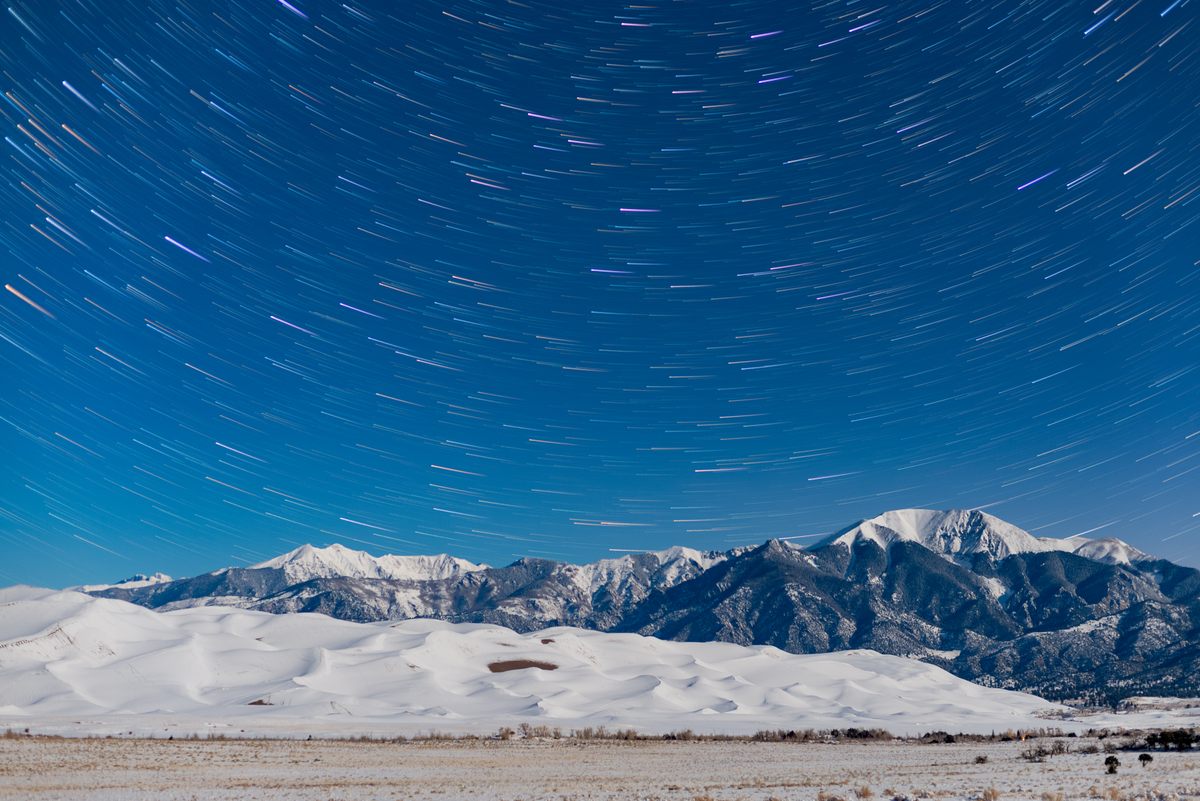
Great Sand Dunes National Park: Winter night sky viewing where mountains and desert meet
Because of its remote location, Great Sand Dunes National Park possesses pristine quietness and immaculate night skies, making it the ideal winter destination for those seeking solitude. By day, explore 230 square miles of sand dunes covered in white snow, and by night, watch meteor showers and celestial objects transit the night sky above the Sangre de Cristo Mountains. The ark is one of Colorado’s three certified Dark-Sky National Parks recognized by the International Dark Sky Association as having “an exceptional or distinguished quality of starry nights and a nocturnal environment that is specifically protected for its scientific, natural, educational, cultural heritage, and/or public enjoyment.”
Nearby, the small town of Crestone attracts spiritualists, extraterrestrial enthusiasts, and ufologists from across the planet. You may get lucky and spot an otherworldly traveler while stargazing in the park, but if your fortune runs dry, you can always visit this nearby UFO watchtower.

Geyser Spring Trail: Colorado’s only natural geyser is hidden deep in the forest
Your chances of seeing another human on this winter adventure are slim to none due to its remote location, but don’t let that stop you from going to this extraordinary and peculiar place. Picture yourself donning snowshoes, crossing a foot-bridge over the West Dolores River, and peacefully wading through glistening powder on a short 2.5-mile round-trip hike through an abundant aspen and pine forest. Birds are chirping through the slowly falling snowflakes while the slow trickle of nearby hot springs entices you onward. The tracks of rabbits, deer, and other small mammals scatter the ground as you hike up the trail to a sign that indicates that the area is fragile. A short distance further you find yourself standing in front of a bubbling blue pool about the size of two large hot tubs. You may be tempted to enter the warm water, especially on colder days; however, it is not advised since the naturally-occuring eruptions of carbon dioxide and hydrogen sulfide gas displace the oxygen near the water’s surface. Fret not, as excellent beverages and fresh food await you back in the town of Mancos at two establishment favorites - Fenceline Cider and Absolute Bakery & Cafe. If you should arrive at the snowy trail and it has not been packed by another hiker yet, you can use Gaia GPS tracker as your guide.
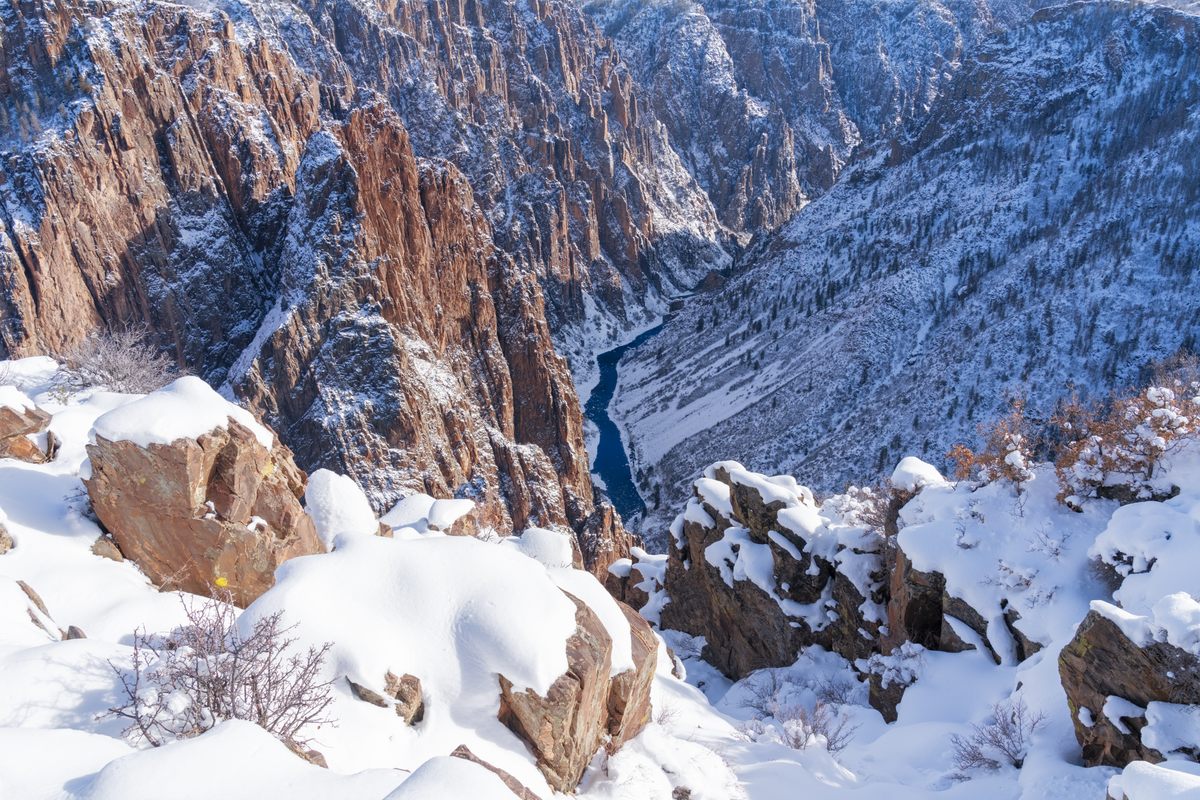
Black Canyon of the Gunnison: A dark deep chasm sparks our imaginations
As you drive east from Montrose on Highway 50, you’d never imagine that hidden from view is a massive 2,700 foot deep, 48-mile long gorge carved by the Gunnison River over the past 2 million years. Visiting the Black Canyon of the Gunnison National Park is an absolute treat in the winter – the steep cliffs are covered in snow and the park’s native critters are busy at work, including mule deer, cottontail rabbits, and the occasional Rocky Mountain bighorn sheep. The park is quiet and welcoming in winter months, as the north rim is closed, as well as the road beyond the south rim visitor center. However, the road beyond is groomed for cross-country skiing and snowshoeing, making for a wonderful winter experience along the canyon.
On the way, you can visit a variety of breathtaking viewpoints of the canyon and the Gunnison River below. Your curiosity for the geologic processes that created this place will be sparked as you enjoy the sounds of the bustling wildlife and the wind blowing through the rabbitbrush and scrub oak. As you gaze down into the 2,700 foot chasm before you – which is twice as deep as the Empire State Building is tall – your mind will wonder how it all began. Fortunately, interpretive signs scattered throughout the park tell the unique story of how this place was made. This park is also designated a Dark Sky Park, boasting incredible views of the stars. Bundle up with a thermos of hot chocolate and savor this epic wintery adventure of a lifetime.

Durango and Silverton Narrow Gauge Railway: Transport yourself to the 1800s on this winter narrow gauge train ride
Whisk yourself back in time on this historic train ride through the mountains of southwest Colorado. Throughout your 5-and-a-half hour round-trip, you’ll journey through downtown Durango, climb up steep snow-covered mountain grades, cross expansive bridges over the Animas River, and gasp in awe of the turquoise water below in the canyon, all from your heated train coach. You’ll gaze in wonder as you pass icicle-blasted pine trees and a frozen river en-route to Cascade Canyon, where you’ll enjoy a fire-side lunch in a frosty mountain paradise. The train crew, dressed in historic regalia, including manual stopwatches, conjure an authentic experience and will give you a taste for the life that miners and pioneers experienced in the early days of the United States. You will be awestruck by the ingenuity and engineering needed to construct this railroad in the 1800s, when it was primarily used to haul gold and silver ore from the San Juan Mountains. It is estimated that over $300 million in precious metals has been transported over this route since its inception.
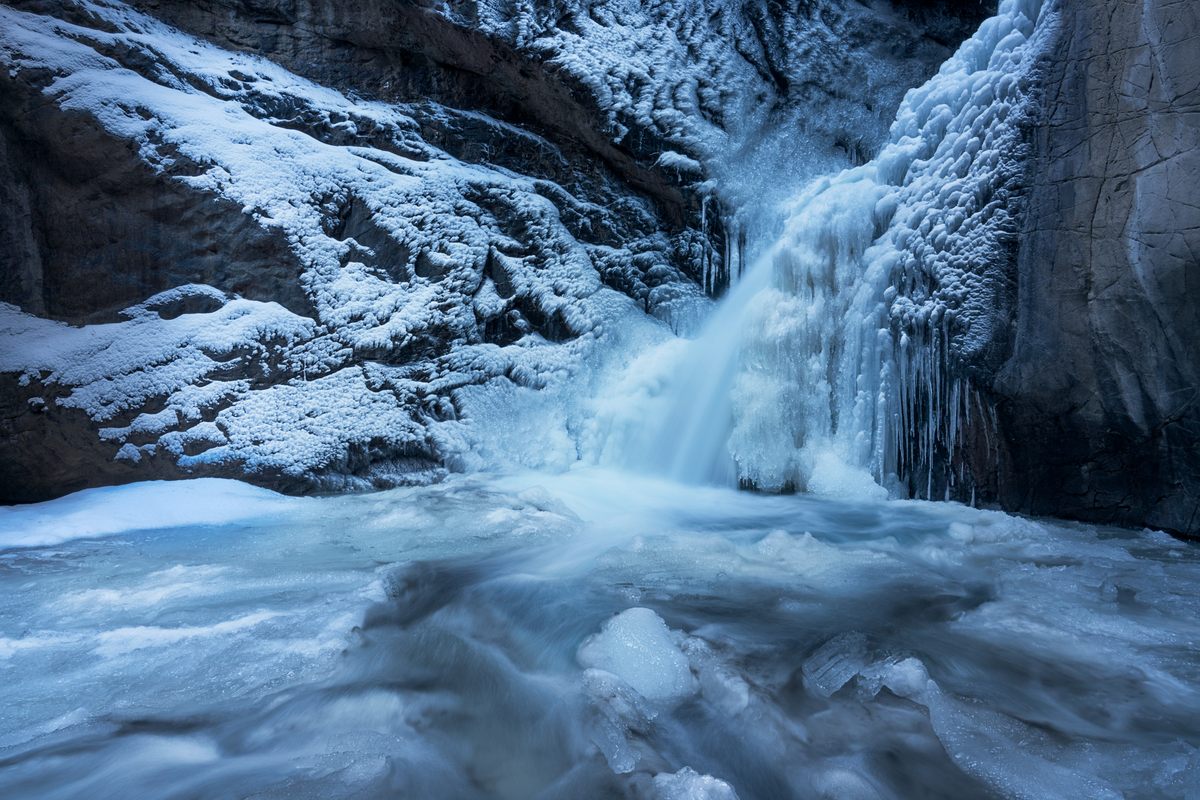
Box Canyon Falls: Explore a mysterious and enchanting mountain slot canyon
Ouray is one of Colorado’s most spectacular mountain towns. The town sits at the base of picturesque snow-capped mountains, surrounded by a network of box canyons and staggering cliffs. These canyons now attract thousands of rigorous ice climbers who enjoy the challenge found in Ouray’s world-famous ice park, which sits along a network of cliffs that include the Box Canyon Falls. While the short road to the falls is often closed in winter, you can easily park just up the hill on Camp Bird Road in a clearly marked parking area. As you pass through the gate into the Ouray Ice Park, you’ll immediately find yourself surrounded by steep ice-covered cliffs. A short walk further, you’ll find the closed-for-winter visitor center, which marks the beginning of your walk to the waterfalls. You’ll descend a small trail onto a steel catwalk that wraps around the side of the cliff, overlooking the frozen waterfalls below. The roaring sound of water pummels your ears as it plummets 285 feet to the base of the box canyon and the falls’ spray freezes on nearby rocks. While the stairwell is completely exposed, it is quite safe to descend the steps to the base of the waterfall and inhale the crisp cold air. After your visit, grab a warm burger and a cold beer at Ouray Brewing, the perfect compliment to any arctic adventure.
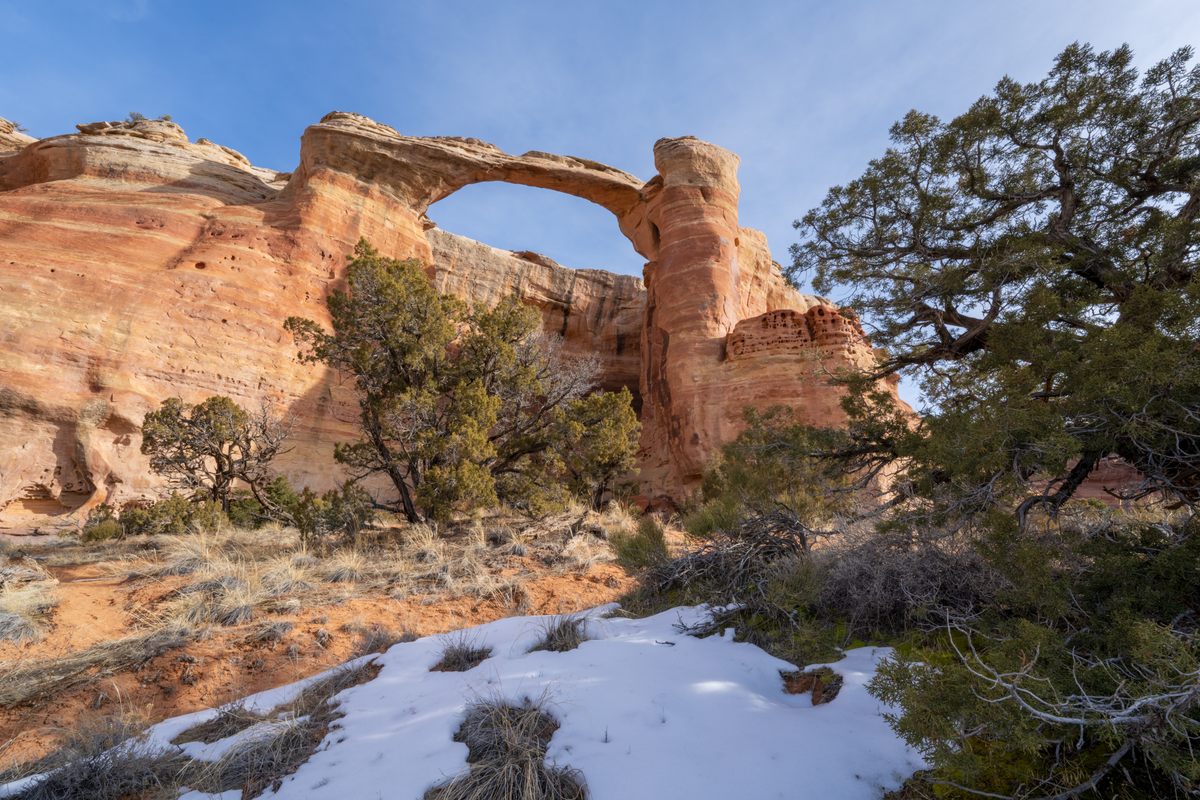
Rattlesnake Canyon Arches: Immerse yourself in Colorado’s arch paradise
The desert makes for one of the most inviting environments in winter and Rattlesnake Canyon Arches is no exception. This area is home to some of the most impressive sandstone arches in the United States, and there is nothing like it in Colorado. Rattlesnake Canyon Arches is almost completely devoid of human visitation in the winter.
This adventurous 16-mile round-trip hike begins by wrapping around cliffs overlooking a large valley filled with stunning sandstone rock and then drops down into a small canyon where an icy creek can be explored for a true photographer’s paradise. This canyon is protected by large walls that shade the creek from the sun most of the day, allowing the ice to stay frozen. From here, you’ll climb out of the canyon following a steep trail through challenging terrain and then wrap around the mesa where the arches are all located. Once you wrap around to the south side of the mesa, you’ll find yourself on the edge of an expansive cliff overlooking the Colorado National Monument covered in snow, a truly remarkable view unlike many others in the state. This side of the mesa is home to all of the engrossing arches and geologic wonders that can be marveled at for hours. After you return to your car, be sure to check out the breweries close to the trailhead, including Base Camp Provisions, which serves delicious poutine and banh mi sandwiches.
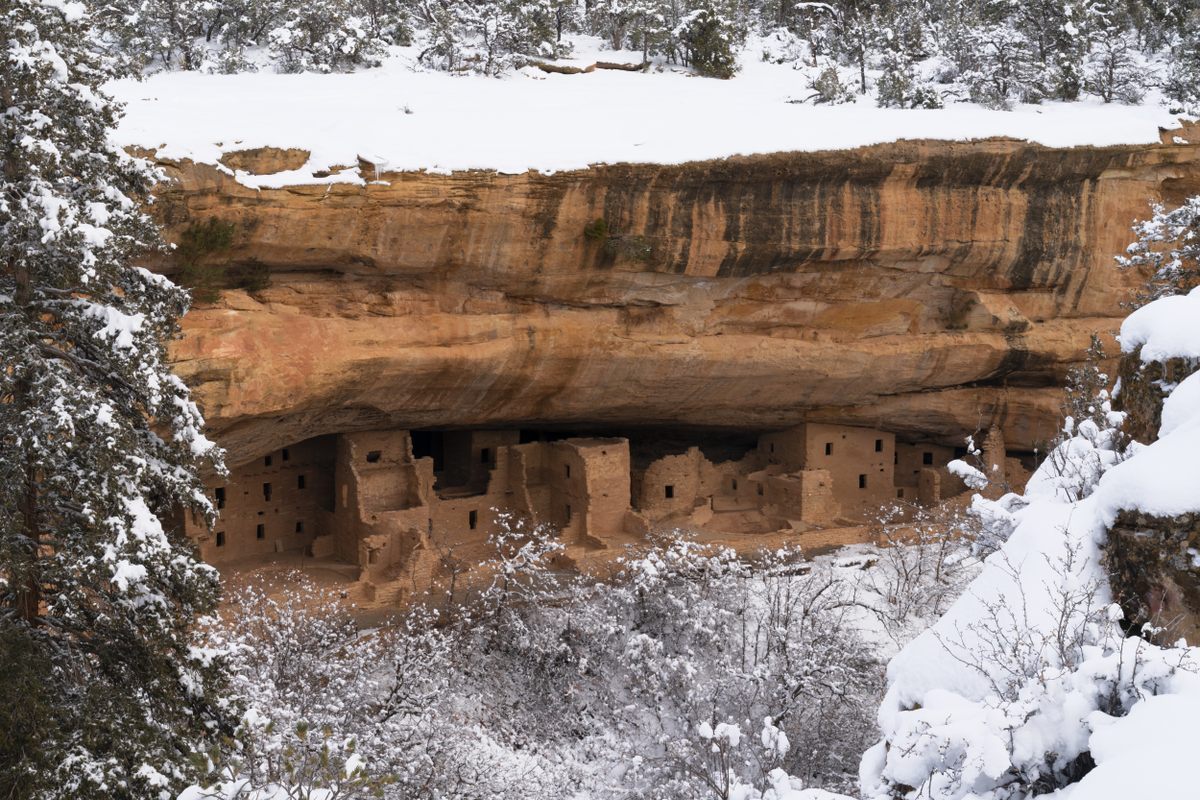
Mesa Verde National Park: Ancient homes carved into sandstone
For nearly a millennia, the ancestral Puebloan people built and managed flourishing communities on the mesas and within the cliffs found at Mesa Verde. For reasons still unknown to modern humans, in the late 1200s A.D., these thriving people abandoned their homes in the span of a generation, leaving behind stone cities within sheltered alcoves which contained a plethora of cultural clues to the past. Now, these mysterious and captivating relics give us a glimpse into the early story of humankind. Visiting after a snowstorm is truly an incredible way to experience the park. The snowfall transforms this magical place into a wonder-filled playground, begging for exploration.
Visit the Spruce Tree House overlook and then hike the Petroglyph Point Trail as a loop to fully immerse yourself in an ancient snow-filled adventure. The trail winds around sandstone alcoves, which are protected from the winter precipitation, forcing you to imagine life as one of the ancestral Puebloan people on this enchanting desert mesa. On your drive in, enjoy the vivid vistas of Hesperus Mountain, which is considered one of the four sacred mountains by the Navajo people.
This post is sponsored by Visit Colorado. Winter Shines a Little Brighter in Colorado.


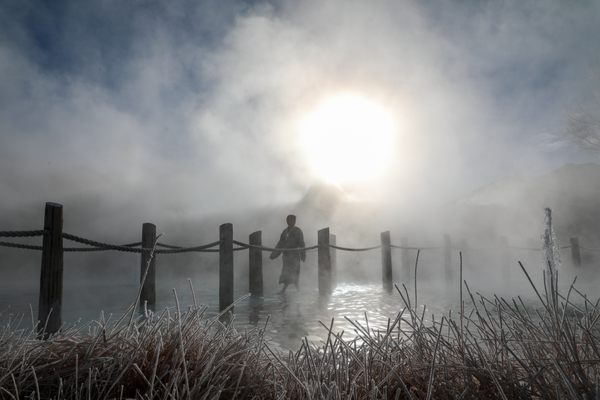
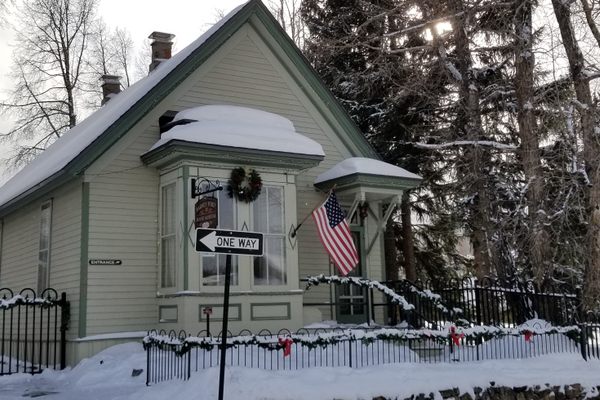
























Follow us on Twitter to get the latest on the world's hidden wonders.
Like us on Facebook to get the latest on the world's hidden wonders.
Follow us on Twitter Like us on Facebook